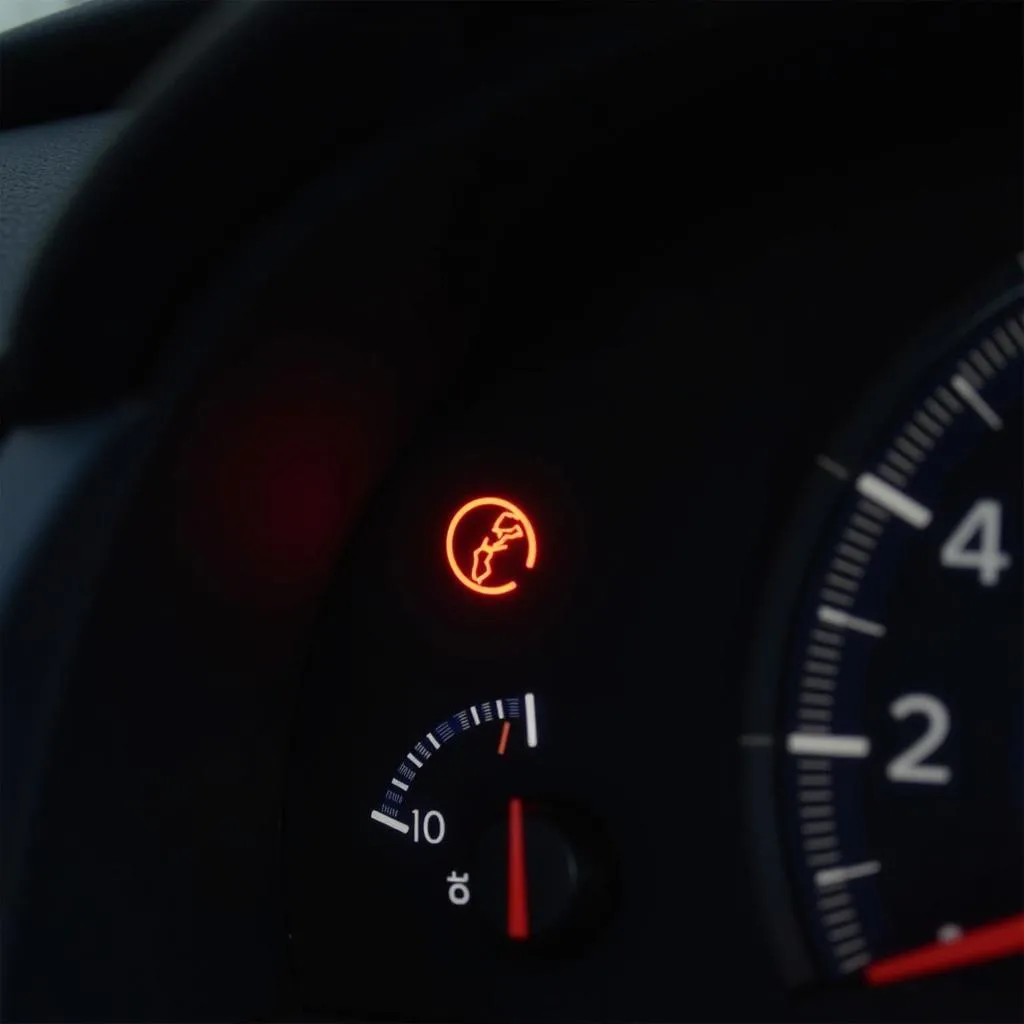The dreaded brake lining warning light on your BMW dashboard can be a cause for concern. Whether it’s a steady glow or an intermittent flicker, this warning signal indicates a potential issue with your braking system that should never be ignored. This comprehensive guide will walk you through the common causes of a BMW brake lining warning light, how to diagnose the problem, and what steps you can take to get your car back on the road safely.
Understanding Your BMW’s Braking System
Before we delve into the specifics of the brake lining warning light, it’s essential to have a basic understanding of how your BMW’s braking system works.
Modern BMWs are equipped with sophisticated braking systems that rely on a complex interplay of hydraulics, electronics, and friction materials. At the heart of this system are the brake pads and rotors. When you press the brake pedal, hydraulic pressure is applied to the brake calipers, which in turn push the brake pads against the rotors. This creates friction, slowing down the wheel’s rotation and bringing your car to a stop.
What Triggers the BMW Brake Lining Warning Light?
The brake lining warning light is designed to illuminate when the brake pad sensors detect that your brake pads have worn down to a predetermined thickness. This is a crucial safety feature, as driving with worn-out brake pads can significantly reduce your stopping power and lead to dangerous driving conditions.
Common Causes of a BMW Brake Lining Warning Light
While worn brake pads are the most common culprit behind a glowing brake lining warning light, several other factors can also trigger this warning signal. These include:
-
Worn Brake Pad Sensors: The brake pad wear sensors are small metal tabs embedded within the brake pads themselves. Over time, these sensors can wear out or become damaged, triggering a false warning light.
-
Damaged Brake Lines: The hydraulic fluid that powers your BMW’s braking system is delivered through brake lines. If a brake line is damaged or leaking, the pressure within the system can drop, potentially activating the brake lining warning light.
-
Low Brake Fluid: Similar to damaged brake lines, a low brake fluid level can also trigger the warning light. This could be due to a leak in the system or simply indicate that your brake fluid is due for a change.
-
Faulty ABS Sensors: Modern BMWs are equipped with Anti-lock Braking Systems (ABS). If an ABS sensor malfunctions, it can disrupt the braking system’s electronic control unit (ECU), potentially leading to a false warning light.
Diagnosing the Problem: What to Do When Your Brake Lining Light Comes On
Ignoring a brake lining warning light can have serious consequences. If this warning appears on your dashboard, it’s crucial to take the following steps:
-
Check Your Brake Fluid Level: The first and easiest step is to check your brake fluid level. Locate the brake fluid reservoir under the hood of your BMW and inspect the fluid level. If it’s below the minimum mark, add the appropriate brake fluid to bring it back to the recommended level.
-
Inspect Your Brake Pads: If your brake fluid level is fine, the next step is to visually inspect your brake pads. You’ll likely need to remove a wheel to get a clear view. If the brake pad material is significantly worn down or you can see the metal backing plate, it’s time for a replacement.
-
Seek Professional Diagnosis: If you’re uncomfortable working on your BMW’s braking system or can’t identify the issue yourself, it’s best to seek professional help. A qualified BMW technician can accurately diagnose the problem using specialized diagnostic tools and recommend the appropriate course of action.
BMW Brake Lining Warning Light: Frequently Asked Questions
Q: Can I continue driving with the brake lining warning light on?
A: While you might be able to drive for a short distance, continuing to drive with a persistent brake lining warning light can be extremely dangerous. It’s best to address the issue as soon as possible to avoid potential brake failure.
Q: How much does it cost to replace BMW brake pads?
A: The cost of brake pad replacement can vary depending on factors such as your BMW model, the type of brake pads used, and labor costs in your area. It’s always a good idea to get a quote from a reputable repair shop.
Q: How often should I replace my BMW’s brake pads?
A: Brake pad lifespan can vary greatly depending on driving style and conditions. However, it’s generally recommended to have your brake pads inspected every 10,000-12,000 miles and replaced as needed.
Q: Can I replace my BMW brake pads myself?
A: While it’s possible to replace brake pads yourself, it’s a job that requires mechanical knowledge and the proper tools. If you’re not comfortable working on your BMW’s braking system, it’s best to leave it to the professionals.
Taking Control of Your BMW’s Safety
The brake lining warning light is your BMW’s way of telling you that it needs attention. Ignoring this warning can lead to costly repairs and compromise your safety on the road. By understanding the common causes of this warning light and taking prompt action, you can ensure that your BMW’s braking system remains in optimal condition, providing you with peace of mind every time you get behind the wheel. If you’re unsure about any aspect of your BMW’s braking system, don’t hesitate to seek professional assistance from a qualified BMW technician.

